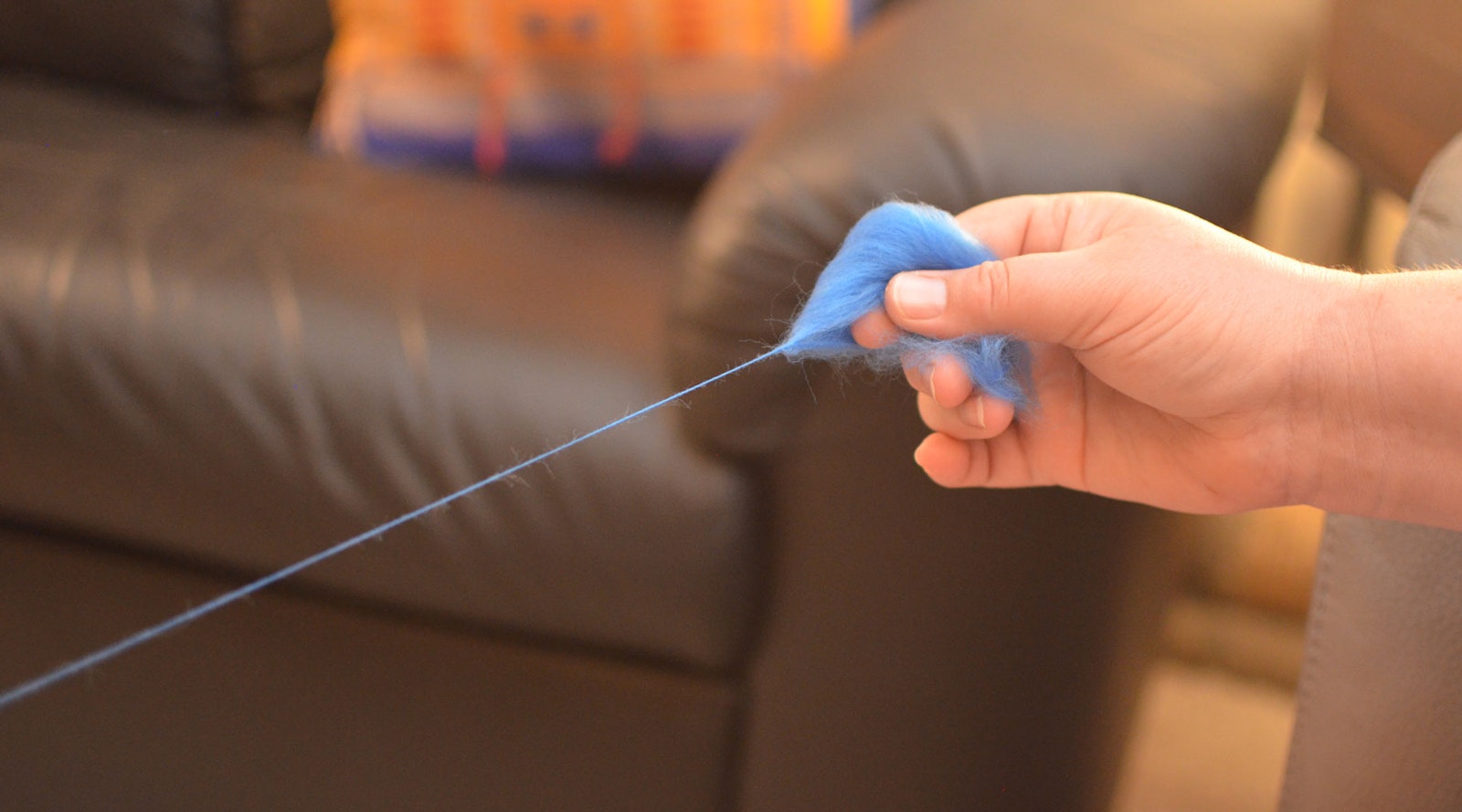When the Tour de Fleece came around, I was all ready. I had picked out fibers for a combospin ages ago, and splitting the handpainted fiber braids into strips was quick—I was ready to spin as soon as the flag came down on June 27. Within 30 minutes of starting my wheel, though, my left hand started to ache. I was afraid I'd crashed out on the first stage.
Drafting Difficulties
Why the bad start? Two reasons: I'm out of shape, and the fiber had gotten very compacted during its time in my stash. Every time I dropped a bit more fiber in the bin or shoved it aside to look for something else, it grew a bit more tangled up and even matted. By the time I started spinning, it was a struggle with every pedal... er, treadle stroke. It was definitely looking like a long tour.
As my hands get more accustomed to spinning after a long break, I've mostly been spinning roving with a woolen draw this spring. The big sweep backward with my relaxed fiber hand feels natural and comfortable. By contrast, the worsted draft that I used to spin top smoothly and evenly feels more like a struggle than it did during my last Tour. This batch of fiber was all compacted top, so long draw just wasn't an option.
As I looked at these little strips, though, I remembered how Sara Lamb spins silk. Most spinning advice is to spin silk worsted, using a short forward draw to keep the yarn as straight and aligned as possible. But Sara pulls off a length of silk top, folds it over, and lets the twist pull the silk fibers off the side. I gave it a try, and suddenly the twist was my ally instead of my rival.
A Bend in the Staple
If you've never spun over the fold before, it can look a little fiddly. It works by breaking off about one staple's length of fiber; it can be pulled from a length of top or just a lock of fiber about 4" long or more. Drape the staple over the index finger of your fiber hand, then use your thumb and middle finger to hold the ends gently. Fan out the fiber at the tip of your finger a bit, then hold the leader against it until it catches. That fiber is the drafting triangle, with the twist grabbing the center of the staple.
Once you've folded the fiber, it's spinner's choice whether to keep your index finger inside the staple or to just hold the ends, letting the fiber's structure keep the space in the middle from collapsing.
Great spinning minds differ on whether this is a more woolen or more worsted technique. It generally works with well-aligned fiber (worsted-ish), but it works with twist in the drafting zone (woolen-ish). My drafting hand has been taking it easy, just holding back the twist occasionally to even out the singles.
It's not all a tailwind; I'm learning how to avoid pinching the ends too hard with my fiber hand without letting one end of the fiber go up the middle of the drafting triangle instead of coming in from the side. It's getting easier as I keep an eye on the fiber and make small adjustments to present the right spot to the twist.
I did set off in the wrong direction on one thing. If I were planning to spin this way from the start, I would have divided up the braids by tearing the top into chunks rather than strips. When I pull out a new strip, I need to open it out widthwise, then tear it into manageable lengths, which leaves me with a stack of one-inch strips that are each about 7" long. The edges of the strips are most difficult to open evenly, and the fiber drafts best when pulled along by its neighbor, so short and wide pieces would definitely have worked better than the long, thin ones I have now. I only divided up the first half of the fiber (for Ply #1), so I can try it with the next batch. I'm also looking forward to comparing the color effects from one ply to the next—perhaps I'll have an accidental fractal-style yarn?
Now that I've found the drafting style that works for me, I'm ready to spin my heart out.

